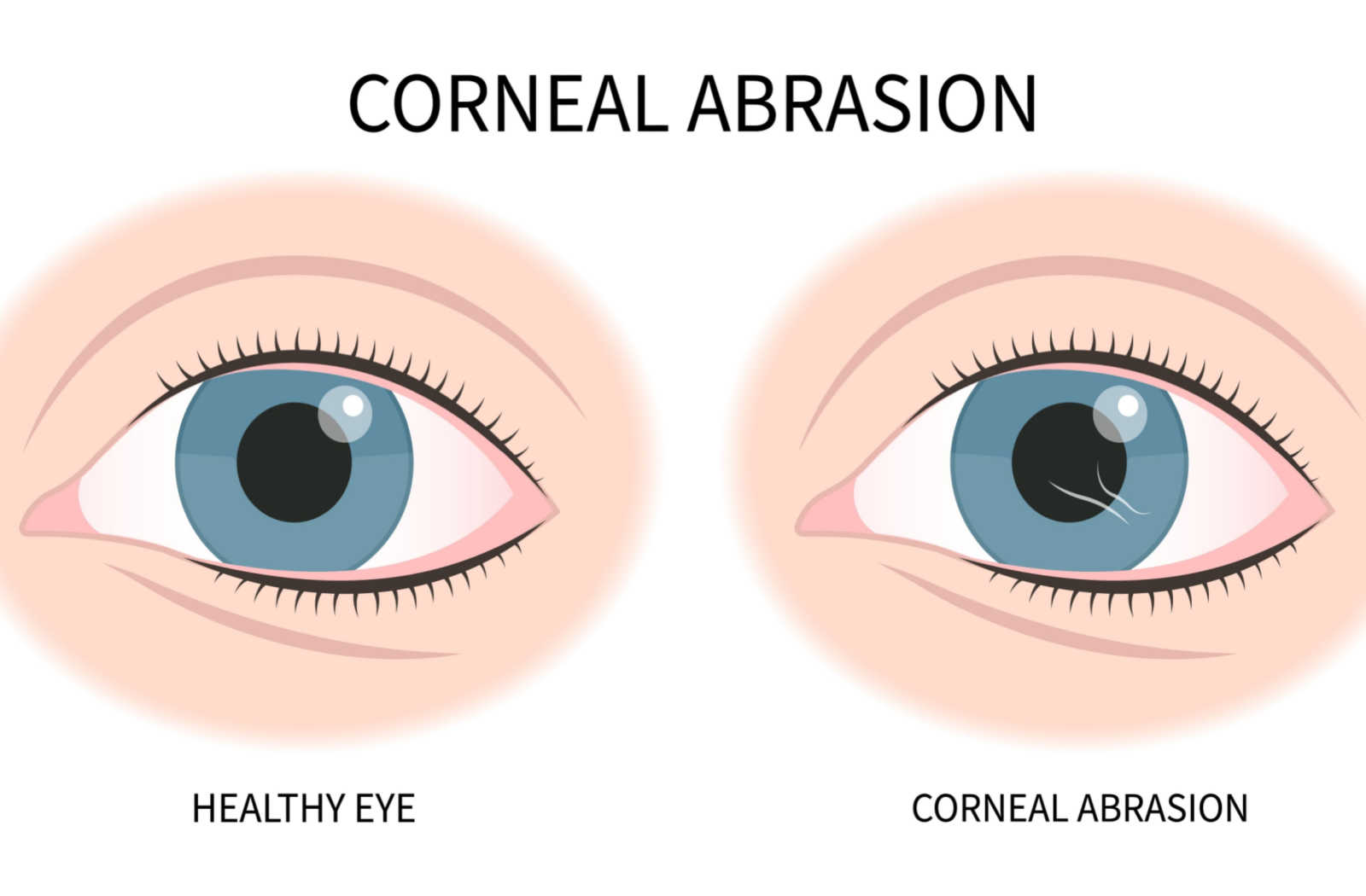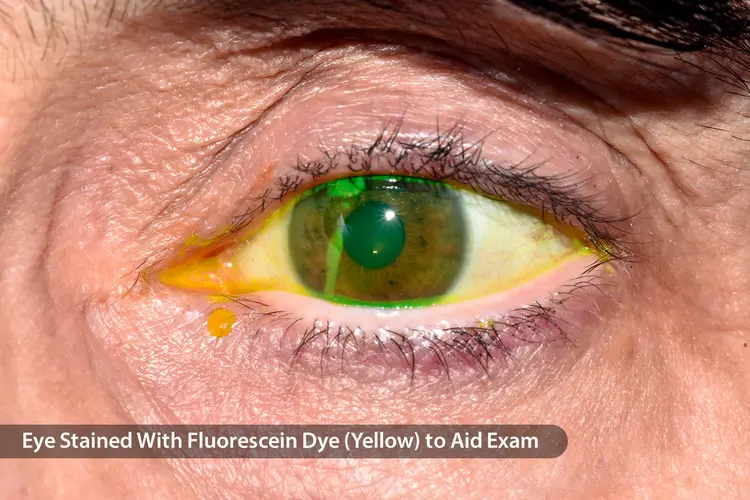What is a Corneal Abrasion?
A corneal abrasion is a scratch, scrape, or cut on the surface of your cornea. Fingernails, makeup brushes and tree branches are common culprits of corneal abrasion. Some other causes of corneal abrasion are rubbing your eyes and having very dry eyes.
Common Corneal Abrasion symptoms
- The feeling that something is stuck in your eye.
- Red, painful, watery, eyes.
- Blurry or hazy vision.
- Being extra sensitive to light.

Your ophthalmologist will put dye called fluorescein on your eye's surface. Then they will look at your cornea with an instrument called a slit lamp. The dye will highlight a cut or scratch on the cornea.

Your ophthalmologist will treat your eye based on what they find in the exam. Some options are:
- You might wear a patch over your injured eye. This is to keep you from blinking and making the corneal abrasion worse.
- You may use moisturizing eye drops or ointment. This adds a soothing layer over the cornea.
- Your opthalmologist may prescribe antibiotic eye drops or ointment to prevent an eye infection.
- You may be given special eye drops to dilate (widen) your pupil. This can help relieve pain.
- You may be given a special contact lens to reduce pain and speed healing.
What is Corneal Erosion?
Corneal erosion is when the layer of cells on the surface of the cornea, called epithelium, loosens from the layer underneath. This is painful and makes your eye vision blurry or hazy.
Corneal erosion pain may start suddenly, often when you first wake up in the morning. Your eyes get dry while you sleep, and your eyelid might stick to your cornea. If the epithelium is not firmly attached, opening your eyelids might peel it off.
Who is at risk?
You are more likely to have corneal erosion if you:
- have very dry eyes.
- had a corneal abrasion or other injury to the eye.
- have a corneal disease (like corneal dystrophy).
- wear contact lenses that are not fitted properly.
- wear contact lenses that have not been cared for properly.
Corneal erosion is treated like an abrasion, but if gotten multiple times, your ophthalmologist may reccomend other treatment. This may include:
- Ointments like sodium chloride 5%.
- Placing a bandage lens and starting topical antibiotics.
- Surgery (superficail keratectomy) or laser treatment to remove corneal tissue.
- Surgery called anterior stromal puncture. Your opthalmologist will make tiny holes on the surface of your cornea. The scar tissue from these holes binds the epithelium to the layer underneath.
- Wear safety goggles or other eye protection when mowing the lawn and trimming bushes; also use them when cutting wood and steel.
- Always wear safety glasses when playing sports.
- Clip your child's fingernails. Babies and children can accidentlly scratch their corneas with fingernails.
- Pay attention when putting on eye makeup or using a hairbrush or curling iron.
- If you wear contact lenses, follow directions for caring for them.